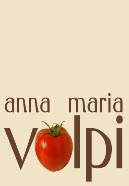


our Italian Cooking
Newsletter







HOME PAGE >> Guest Cooks >>
DISCLAIMER and
PRIVACY POLICY
before using
our site
-
Advertise with us
site map
recipes
policies
about us



Extra-
The Best Selection of Italian Extra-
Buy from the source Authentic Aged Traditional Balsamic Vinegar from Italy
Sicily, Apulia, Lazio, Liguria, and More...The Best Selection of Succulent Italian Olives Oil
Infused Extra-
Spice up your dishes with Infused Flavored Italian Extra-
For the sponge
1 tablespoon yeast
1/2 cup (90 gr) flour
1/2 cup milk
1 tablespoon sugar
For the dough
17 oz (250 gr) butter, melted
2 eggs
9 tablespoons (125 ml) milk, lukewarm
4.5 cups (625 gr) flour
1/2 cup (125ml) yogurt
1/2 teaspoon salt
For the filling
1 lb 2 oz (500 gr) walnuts
14 oz (400) gr sugar
1 teaspoon cardamon
9 oz (250 gr) butter, melted (to brush the cake layers)
For finishing
1-
1/4 cup water
1/2 teaspoon saffron
For the syrup
1-
2/3 cup (100 gr) sugar
1/2 teaspoon saffron
Preparing the sponge
Place yeast, flour, milk, and sugar in a small bowl.
Mix to combine and set aside.
Preparing the dough
Transfer about 3/4 of the flour to a bowl.
Add melted butter, milk, and yogurt.
Add the sponge.
Mix with a spatula to combine.
Mix with a spatula to combine.
.... until a consistent dough is formed.
Transfer the dough to a lightly floured work surface. Knead the dough .....
Cover the dough with plastic wrap or a towel, and set it aside in a warm corner to
rise, for about 1 to 1-
Preparing the filling
Add the rest of the flour.
Mix vigorously ....
.... for a few minutes until smooth.
Lightly grease a bowl with a small amount of butter.
Preheat oven to 400F (200 C).
Place the walnuts in the oven and toast them for about 10 minutes at 400 F (200C). Lower the oven temperature to 350 F (180 C)
In a food processor grind the walnuts coarsly.
Add sugar and cardamon. Mix thoroughly to combine.
Dough second rise
After about 1-
Fold on itself.
Push it again.
Cover and set aside to rise again.
Assembling the baklava
Transfer the dough to a lightly floured surface and knead it shortly until is smooth and elastic.
Divide the dough into 12 pieces and form 12 little balls.
Brush the bottom of a 10” (25 cm) pan with a small amount of butter.
Reduce one of the dough balls to a round thin disk approximately the size of the pan, with a rolling pin.
Transfer the dough disk to the pan and push it down to cover the bottom of the pan uniformly.
Brush the surface of the dough with butter.
Prepare a second disk and place it on the first one. The two bottom disks will be a thicker base for the rest of the cake.
Brush the surface of the dough with butter.
Add about 3-
Spread the walnut mix around to form an even layer.
Prepare one more disk. Place it in the pan. Brush the surface with butter.
Add about 3-
Repeat this step, placing the disks of dough one on top of the other with butter and walnuts until all the layers are used.
Finish the cake with a smooth disk of dough.
Cut the cake in a diamond pattern with a sharp knife .
Place one almond on each diamond.
Mix the 1/4 cup hot water with the 1/2 teaspoon saffron in a small bowl.
Brush the surface of the cake with the saffron/water mix.
Mix water and sugar in a pan to form a syrup. Dissolve the saffron in a small amount of hot water.
Transfer the pan to the stove on medium heat and bring it to a boil. Add the saffron water and mix to dissolve.
Place the pakhlava in the oven 350 F (180 C) and bake them for about 40 minutes or until the surface is golden.
Pour half the saffron and sugar syrup on the baklava, making sure it soaks deep into them. Place the baklava back in the oven for 5 minutes. Pour the rest of the syrup on the baklava. Place the baklava in the oven again for about 5 to 7 minutes. Set the baklava aside to cool.
When the baklava is done and still hot, pass a knife through the cuts between the baklava to separate the diamonds.
Remove the baklava from the pan when completely cool and serve them.
Pakhlava (Baklava) is a rich dessert made in Central Asia, the Middle East, southeastern Europe, and the Caucasus region. The history of baklava is controversial since there are people of many nationalities that claim its origin to be originally from their country. The word baklava is a Turkish word, and etymologically it may have an Altaic origin.
There is a theory that baklava may be a variation of güllac, which has Central Asian origins. There are also theories that it is an Ottoman variation of another dessert from the Middle East. If this is true, then it may have spread into the Balkans and into the Middle East under Ottoman rule.
Whatever its origins, baklava is a rich dessert made of layers of dough with nuts and honey. It is traditionally linked to certain holidays. For example, in Azerbaijan, pakhlava (as it is known in Azeri) is often made for the Novruz holiday celebrating the beginning of spring. In parts of the Middle East and the Balkans, it is made during Ramadan. There are variations of baklava specific to particular countries, or even to different cities or regions within a given country. The baklava presented here is the variation usually made in Azerbaijan, specifically in Baku. In different parts of Azerbaijan, baklava can be made using walnuts, almonds, hazelnuts, or a mixture of nuts. The variation presented here is made using walnuts.
Finishing the baklava